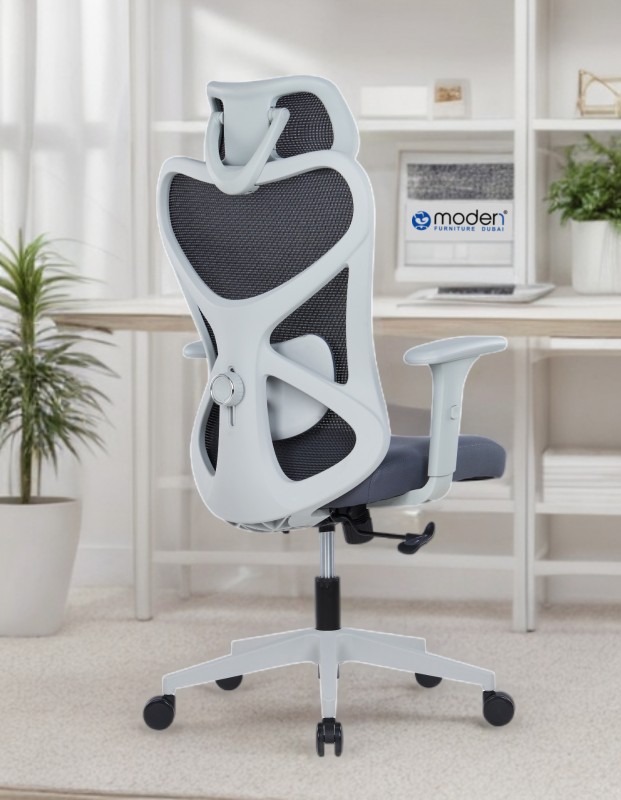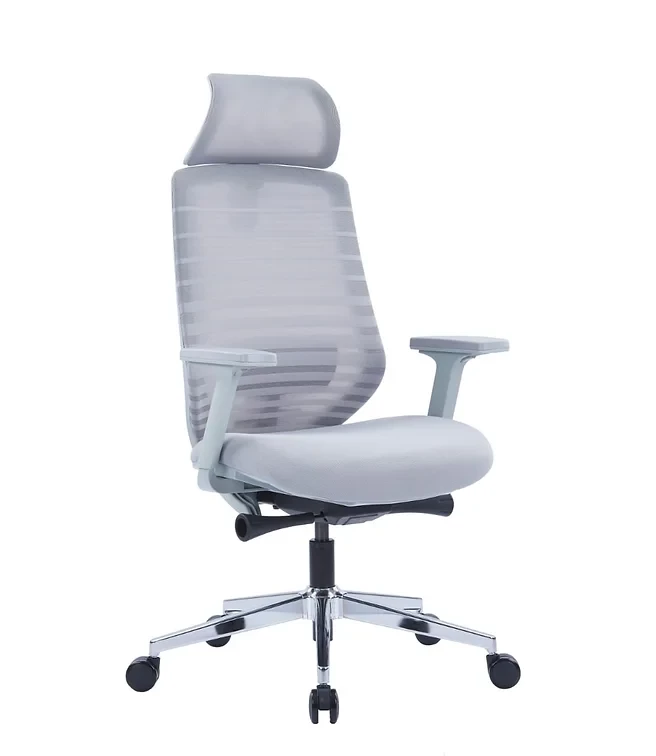
What Makes an Office Chair Truly Ergonomic?
Introduction
Not all chairs labeled “ergonomic” offer the real benefits they promise. A truly ergonomic office chair is designed to support your body’s natural alignment, movement, and comfort throughout the workday. From lumbar support to adjustability and seat design, every element plays a role in minimizing strain and promoting productivity. In this article, we’ll explore what makes an office chair truly ergonomic and how to identify the features that matter most for your daily comfort and performance.
1. Adjustable Lumbar Support
One of the key markers of an ergonomic chair is its lumbar support, especially if it can be adjusted in height and depth. Proper lumbar support helps maintain the spine’s natural curve, reducing lower back strain. A chair like the Ucomfort Super Ergonomic Executive Chair includes an intuitive lumbar mechanism that conforms to your lower back during extended work sessions.
2. Seat Height Customization
An ergonomic chair must allow you to set the seat height so your feet are flat on the floor, knees are level with hips, and thighs rest parallel. The Lirbo High-Back Chair offers smooth height adjustments to accommodate a wide range of user heights for ideal alignment.
3. Adaptive Seat Depth
Seat depth impacts how well your thighs and lower back are supported. A truly ergonomic chair provides enough space between the seat edge and the back of your knees, allowing for circulation without pressure buildup. Chairs with adjustable depth help maintain comfort throughout the day.
4. Dynamic Recline Function
A recline mechanism that moves with you helps prevent stiffness. Chairs like Ucomfort allow synchronized tilting, encouraging motion while maintaining support for the spine and neck. A dynamic recline reduces fatigue from long periods of sitting upright.
5. Proper Armrest Placement
Ergonomic chairs include adjustable armrests to reduce shoulder and neck strain. Look for height, width, and pivot adjustments so your arms can rest comfortably. The Lirbo chair offers streamlined arm support that doesn’t interfere with your workspace but ensures upper body alignment.
6. Breathable, Supportive Materials
Fabric and cushioning contribute to long-term comfort. A truly ergonomic chair uses breathable mesh or cushioned fabric that balances softness with firmness. The Ucomfort chair includes a mesh back that promotes airflow, paired with a contoured, padded seat.
7. Contoured Backrest Design
An ergonomic backrest follows the shape of your spine and encourages upright posture. The curved structure in chairs like Lirbo supports the upper and lower back together, preventing slouching and promoting healthy alignment.
8. Stable, Smooth Mobility
An ergonomic chair should move smoothly and rotate easily to allow natural movement around your workspace. High-quality casters and a 360-degree swivel help you stay mobile without strain or disruption.
9. Adjustable Head and Neck Support
For those spending long hours at the desk, especially during calls or reading tasks, headrests can reduce upper spine tension. Some models include height-adjustable or curved headrests to support the cervical spine.
10. User-Centered Customization Options
No two people are built the same, so ergonomic chairs must offer customizable features to meet individual needs. From tilt tension to seat slope and arm height, chairs like Ucomfort and Lirbo provide adaptability for a truly personal fit.
Additional Considerations When Choosing an Ergonomic Chair
-
Ergonomics Certified by Standards
Look for chairs that meet global ergonomic certifications or standards, as they ensure a baseline of support, adjustability, and durability. -
Balance Between Softness and Firmness
Too much cushioning can compromise posture; too little causes discomfort. A true ergonomic seat uses supportive foam or tensioned mesh for comfort that lasts. -
Ease of Adjustability
An ergonomic chair shouldn’t be complicated to use. Levers and dials should be easy to reach and operate so you can adjust as needed throughout the day. -
Back Support During Movement
True ergonomics doesn’t stop when you move—your chair should maintain back support during leaning, turning, or stretching. -
Posture Encouragement Features
Look for details like a waterfall seat edge or tilted seating base that encourages active sitting and better blood circulation. -
Design That Encourages Breaks
Ergonomic chairs should invite movement. A gentle recline or tension-based tilt encourages short shifts in posture that relieve fatigue. -
Adaptability for Shared Spaces
If the chair is used in a shared environment, it should adapt easily to different body types without needing professional setup each time. -
Durability That Supports Functionality
True ergonomic design also includes reliable build quality—adjustments should last and maintain their precision after repeated use. -
Foot Support and Grounding
Ergonomics isn’t just about the chair—ensure your feet can rest flat or use a footrest. Chairs with well-balanced base heights make this easier. -
Intuitive Ergonomic Design Aesthetics
An ergonomic chair doesn’t need to look clinical. Modern designs like those of Ucomfort and Lirbo blend ergonomic function with stylish profiles that suit both home and office environments.
Recommended Products

-
Ucomfort Super Ergonomic Executive Office Chair – High Back, White
This chair features advanced lumbar support, breathable mesh, synchronized recline, and a sleek white profile, ideal for long workdays with premium ergonomic support.
-
Lirbo Executive High Back Ergonomic Chair – Grey
Designed for structured comfort, the Lirbo chair includes contoured back support, smooth adjustability, and a minimalist design that fits any professional setting.
Final Thoughts
A truly ergonomic office chair is more than just a seat—it’s a vital tool for maintaining health, comfort, and focus throughout your workday. By understanding what sets a chair apart—like adjustable lumbar support, quality materials, and user-centered design—you can make a smart investment in your well-being. Chairs like Ucomfort and Lirbo prove that functionality and style can go hand-in-hand when it comes to workplace comfort.
FAQ
What is the most important feature of an ergonomic chair?
Adjustable lumbar support is one of the most crucial features, as it directly impacts lower back health and posture.Are all adjustable chairs ergonomic?
Not necessarily. While adjustability helps, true ergonomic chairs also offer thoughtful design, proper proportions, and durable support.How do I know if a chair fits me ergonomically?
When seated, your feet should rest flat, knees should be level with hips, and your spine should feel naturally supported without slouching or pressure.Can an ergonomic chair reduce back pain?
Yes. A well-designed ergonomic chair supports your spine, reduces muscle strain, and can significantly reduce both lower and upper back discomfort.


